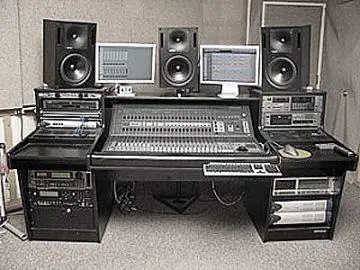
When it comes to using sounds for your music production requirements, you have the option of using software based sounds or sounds generated from hardware. This is a hot topic among experienced musicians and producers, they can go on and on debating on this topic, and their are die-hard fans of each. But the fact is that with experience, producers tend to start using both; depending on their experience with hardware and software, they start using the best of both the worlds. Go to any high end studio, and you will most likely see the use of both. Here we take a look at the two, and see the advantages of using one over the other.
Hardware vs Software: Introduction
 If you have spent even some time reading on how music is created on a computer, you will know that you have a choice of using either the software sounds, or sounds that come from hardware such as physical synthesizers and keyboards.
If you have spent even some time reading on how music is created on a computer, you will know that you have a choice of using either the software sounds, or sounds that come from hardware such as physical synthesizers and keyboards.
But then there are many who think that one is better than the other.
There are advantages and disadvantages of using both hardware as well as software; they do have their ups and downs. So it is probably best to use both, so that you can leverage the best of each of them. A professional music producer is most likely to have a DAW like Pro Tool and sound libraries, along with an excellent keyboard like Motif or Fantom, in his/her studio.

If you are a keyboard player then a hardware synth rocks. You just need to turn on the power and you can get started. However, Soft synths are cheaper and easily accessible, and they can sound better (if you know how to use it).
Here are some more factors to consider in the hardware vs software debate.
Learning Curve
Hardware: Smaller learning curve. Just order a hardware equipment from your favorite music store and with no time you’re on with your music production.
Software: You have to install it it, and then you have to learn the interface, and learn how to use the various features.
Sound Retrieval
With hardware, sound retrieval is usually faster. Want kick, snare or anything else, just press the button and you get the sound.
With software, you have to make a few clicks before you can access the patches.
Sound Retrieval
Hardware usually has a fuller sound. You can get that large tube sound, large analog sound which you are used to hearing on records, CDs and movies.
Even software can give you a fuller sound, but you may have to treat it, pass it through various effects to get that sort of full sound.
Arranging Process
Here, software has an advantage. So while the creation of a music piece may take a bit longer with software, arranging with a software is much more easier and convenient.
Be it the hook, or the chorus, or any other part, its easier and lot faster using software than hardware.
So when it comes to arranging, software is preferred by most.
Also, there’s a lot more that you can do using software plugins – effects, compressor, and so on. With hardware, there are only a few options available.
Live Instruments
Nothing beats the sound coming from a quality acoustic instrument. While software is able to closely mimic these instruments nowadays, having an experience musician in your studio is any day better than using any hardware/software combination. However, that is an expensive option for most producers.
Sale of Electronic Music Gear Sales Booming (Music Gear Trends)
Although several acoustic and folk musical instruments are making a resurgence, recent trends indicate that the sale of electronic music gear is also booming and analog Instruments are leading the way.
And one of the reasons for the spurt in sales is that the new generation of players/musicians love to work with ‘knobs, faders and other features’ (and less with digital displays and computer interfaces.)
“Players are realizing that an analog synth is much more of a real, honest-to-goodness musical instrument,” says Dave Smith, founder of San Francisco-based Dave Smith Instruments.
Top synth makers nowadays emphasize more on the usability and musicality aspects, in order to break any sort of barrier between the person and the machine. Difficult and complicated systems are out, and dedicated gear that focus on limited functionally is finding acceptance.
Another reason for the increased interest in analog gear is the availability of these gear at prices that most musicians can afford.
Final Words
If you’re a beginner, go with software. As you get more experience, start incorporating hardware into your production setup. And over time, aim for a mix of both hardware and software. Software for midi creation/programming. You can see what you’re doing, edit it easily. You can then dump it all, using a midi interface, to a hardware (to create large polysynth sound).
Having said that, its important that you use what you’re comfortable with. These are not hard-and fast rules. What works for one producer may not work for another.
What do you feel about using Hardware or Software Sounds for Music Production?
KeytarHQ editorial team includes musicians who write and review products for pianists, keyboardists, guitarists & other musicians. KeytarHQ is the best online resource for information on keyboards, pianos, synths, keytars, guitars and music gear for musicians of all abilities, ages and interests.



Leave a Reply